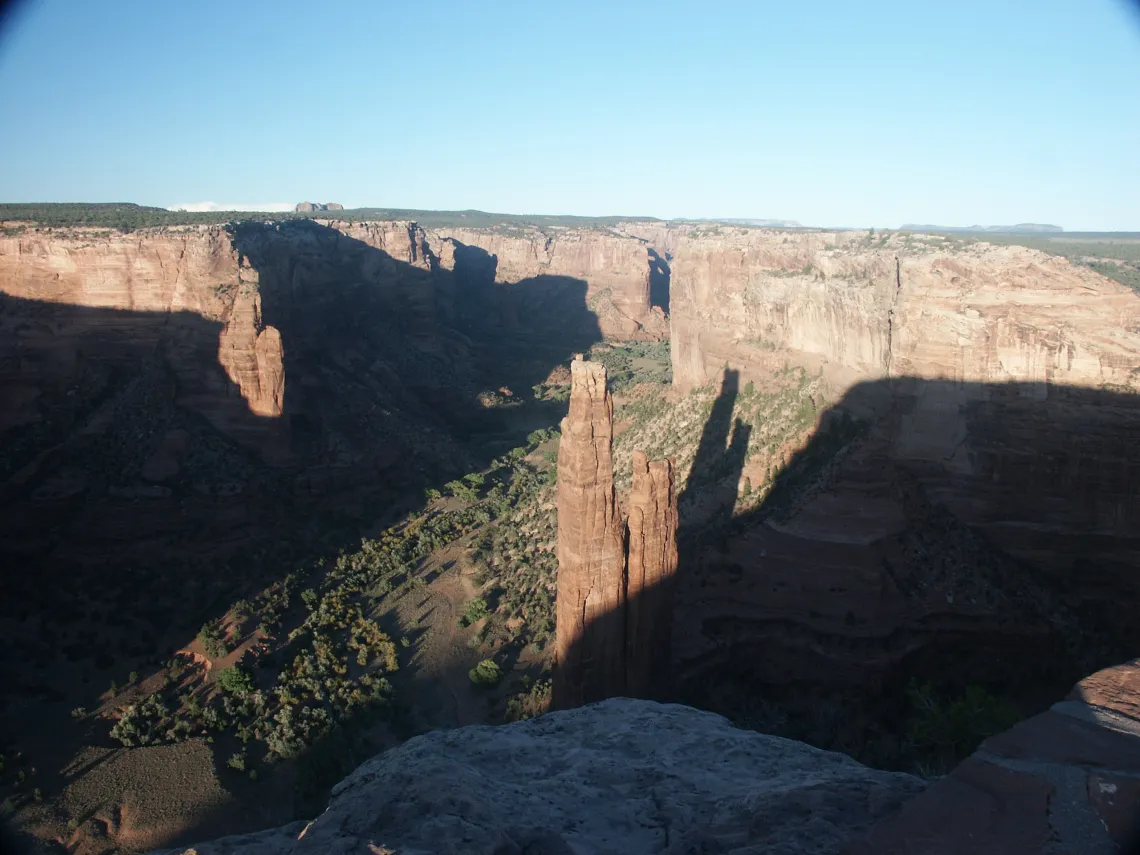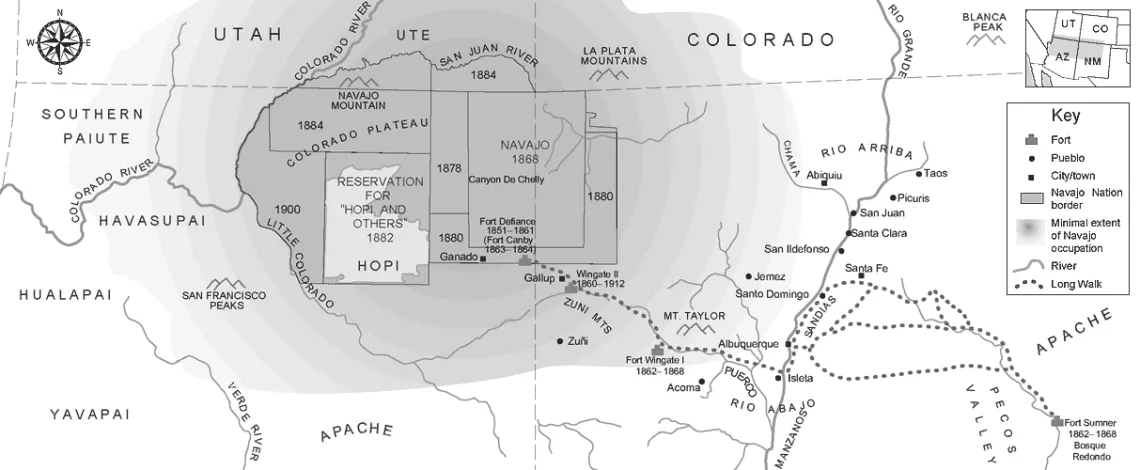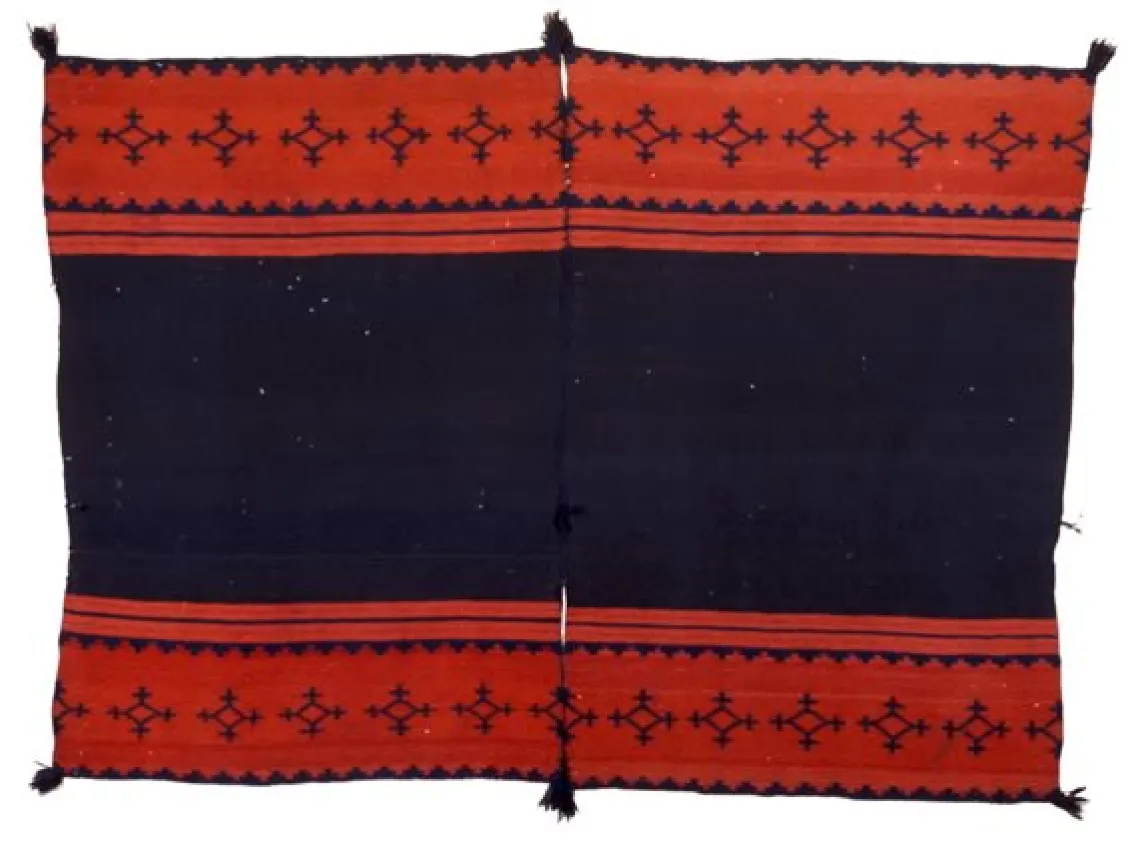Image

Spider Rock, Canyon de Chelly (near the town of Chinle, Arizona).
Image

Map of the Navajo region in the late 19th century. Adapted from "Blanket Weaving in the Southwest" by Joe Ben Wheat, edited by Ann Lane Hedlund, 2003, The University of Arizona Press, pg. 37. Original illustration by Kathleen Koopman. Adapted for the web by Laura LePere.
Image

| Function | Fiber | Type | Ply-Spin-Twist | Color | Dye | Count * | ||
|---|---|---|---|---|---|---|---|---|
| Warp | Wool | Handspun | -- | Z | -- | White | None | 13 |
| Weft | Wool | Raveled | 1 | Z | -- | Red | C Coch 95+Lac 5, Tested 2004 | -- |
| Weft | Wool | Raveled | 2 | S | -- | Red--Solid/Speckled | A, B Lac, Tested, 2004 | 71 |
| Weft | Wool | Handspun | -- | Z | -- | Dk Blue | Indigo | 61 |
| Weft | Wool | Handspun | -- | Z | -- | Dk Brown-Black | None Blk+Native | 61 |
| Ecord | Wool | Handspun | 3 | z | S | Dk Blue | Indigo | 2 |
| Other | Wool | Commercial | 2 | Z | S | Black | Synthetic? | -- |
| Other | Wool | Handspun | 3 | z | S | Dk Blue | Indigo | -- |
| Other | Cotton | Handspun | 3 | Z | S | Black | Synthetic | -- |
| Other | Wool | Handspun | 3 | z | S | Dk Blue | Indigo | -- |
| * threads/inch | ||||||||






